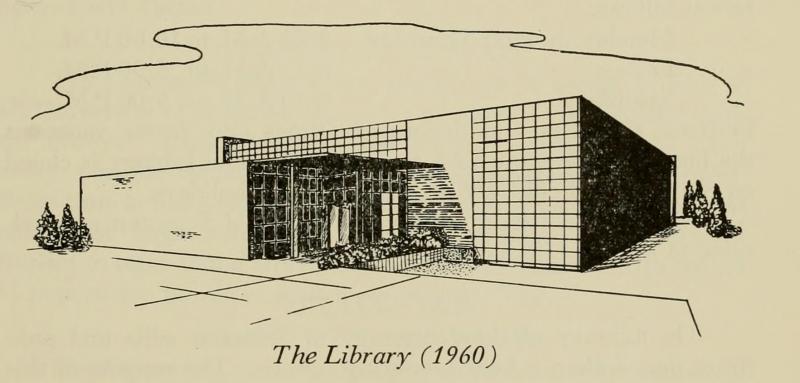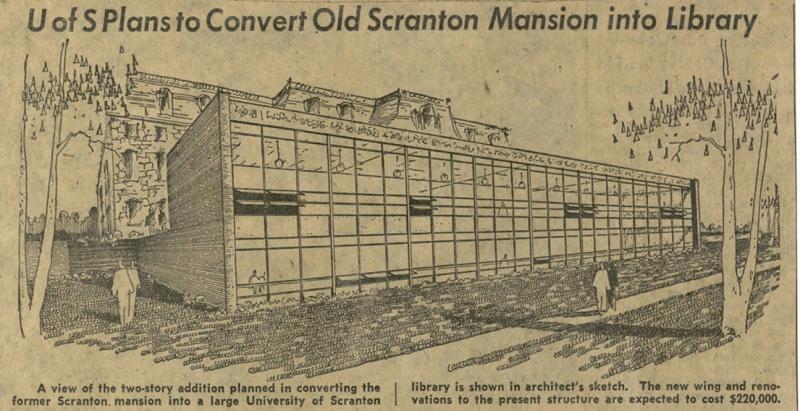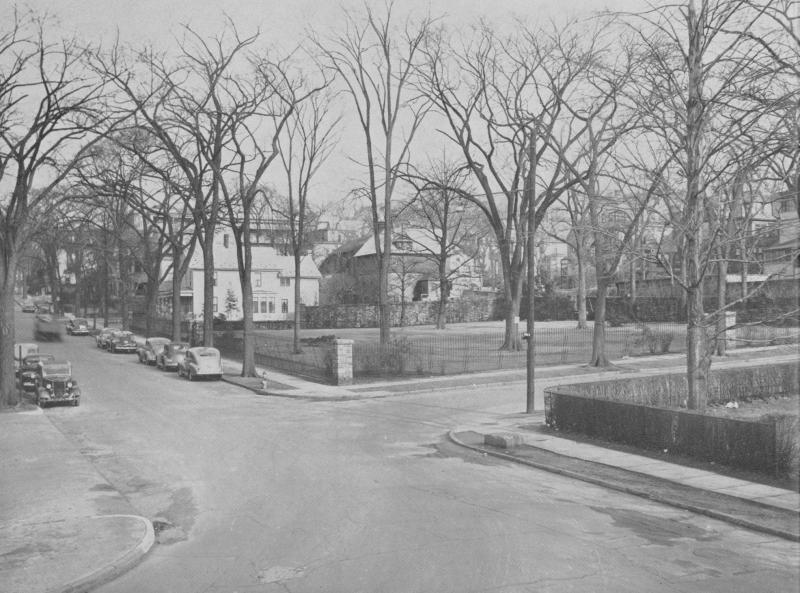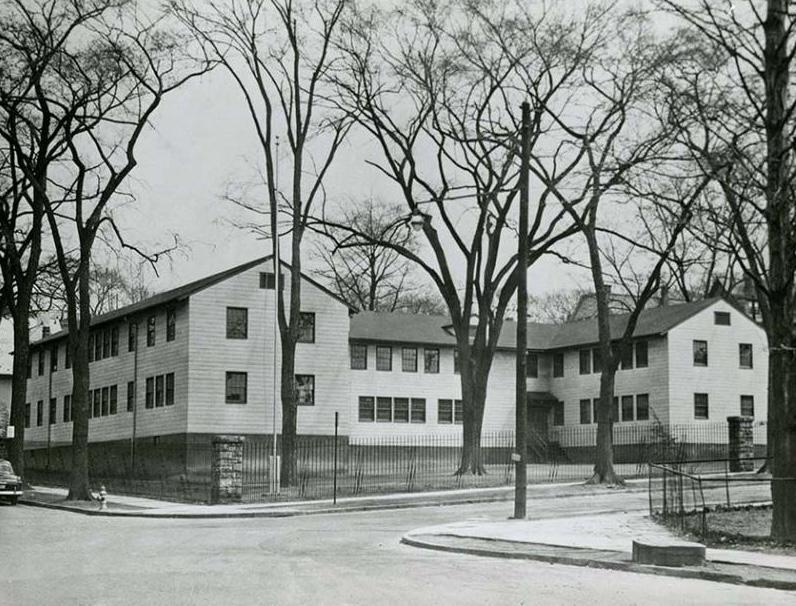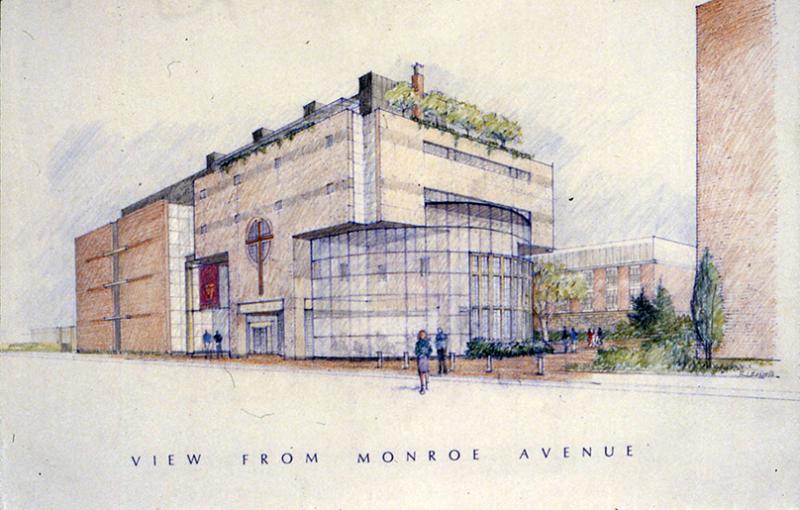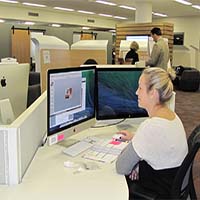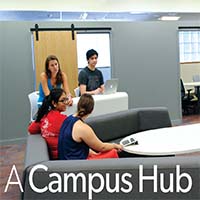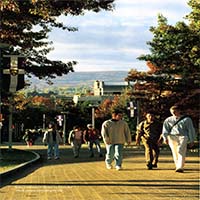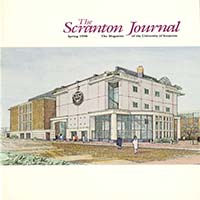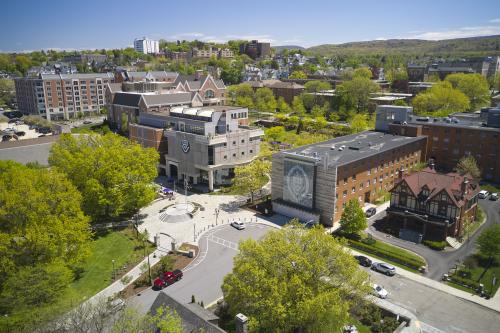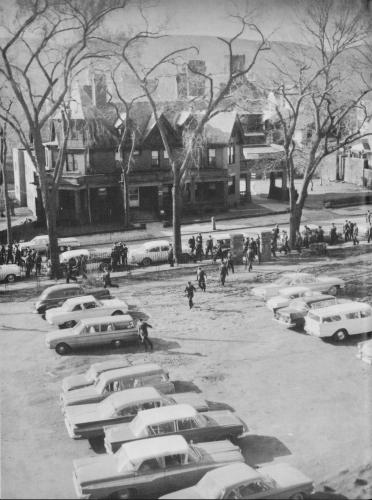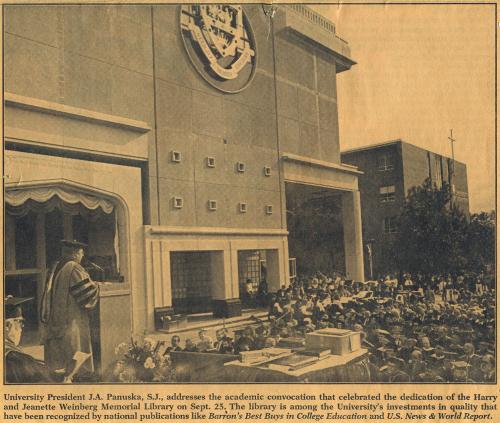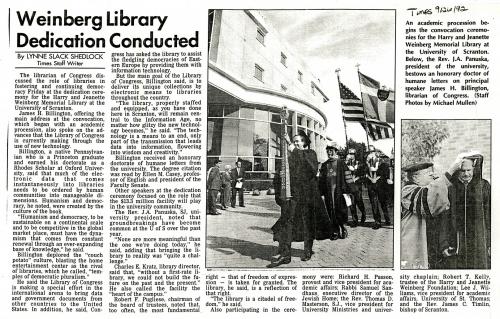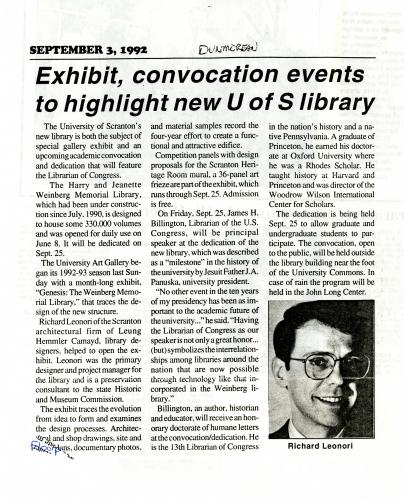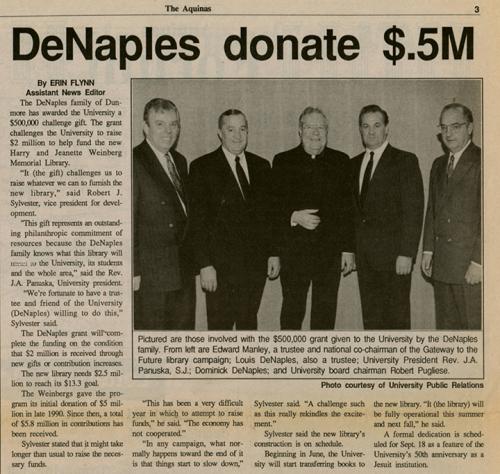Campus Libraries
In the mid-1950s, the University announced a $5,000,000 campus expansion plan that included the transformation of the Scranton Estate, which then housed the Jesuit community, into a library. A new library was urgently needed to replace the existing library on the third floor of Old Main, which was not only far away from classrooms but was also structurally inadequate: some of its 40,000 volumes had to be moved to lower floors due to structural strain on the building. However, the idea of building an addition onto the Estate proved to be impractical, and it was dropped in favor of building a separate structure on the Estate grounds.
Alumni Memorial Library was designed to hold 150,000 volumes as well as study space for approximately 500 students. The split-level design included conference rooms, a music room, a visual aid room, microfilm facilities, and a smoking lounge. The ironspot brick building was considered cutting edge at the time, with glare-reducing thermopane glass, noise-reducing walls, radiant heating and cooling, and humidity control. Overall construction costs were approximately $806,000.
Alumni Memorial Library
Weinberg Memorial Library
By the 1980s, Alumni Memorial Library was struggling to accommodate technological advances in library services since its construction in 1959. It was also out of space, despite weeding of its collections, conversion of periodicals to microform, and the installation of compact shelving. An expansion to the library’s services, resources, and study spaces was urged by the Middle States Association in 1967, 1977 and 1987 and by the Academy for Educational Development in 1983. By the late 1980s, with the completion of Hyland Hall, the Byron Complex, and two new residence halls, the library emerged as the University's “last critical need to maintain its competitive position in the northeast” (Scranton Journal, Spring 1990).
The site of the Weinberg Memorial Library had once been a house belonging to Worthington Scranton before he moved to the Estate in 1899. The property was then donated to the University in 1941 along with the Scranton Estate. In the 1950s, the site became the location of the Arts Building, one of three Navy barracks acquired by the University after World War II. The iron fence of the original Worthington Scranton home was retained. The Arts building was razed in 1962 to create the Galvin Terrace Sports and Recreation Complex, which later became the site for the Weinberg Memorial Library.
The Weinberg Memorial Library was the largest capital investment in the University’s history at the time. The Gateway to the Future Campaign raised nearly $13.3 million, with contributions from over 100 donors and significant support from the Harry and Jeanette Weinberg Foundation, Patrick and Marie Roche, DeNaples Family, and Pew Charitable Trusts, among many others. Read an architectural description of the library's design from 1992 here.
The new Library was envisioned as critical in expanding academic resources on campus and enhancing research support for students and faculty. The dedication ceremony featured Librarian of Congress James H. Billington as the keynote speaker who emphasized the Library’s enduring relevance in the digital information age. Billington highlighted that, despite advancements in technology, the essence of libraries remains in their ability to cultivate wisdom and creativity. University President Rev. J. A. Panuska, S.J., underscored the Library’s role in preserving academic freedom, stating that the institution was committed to upholding intellectual exploration. Board of Trustees Chairman Robert F. Pugliese reinforced this idea, describing libraries as citadels of freedom where ideas could flourish without constraint.
